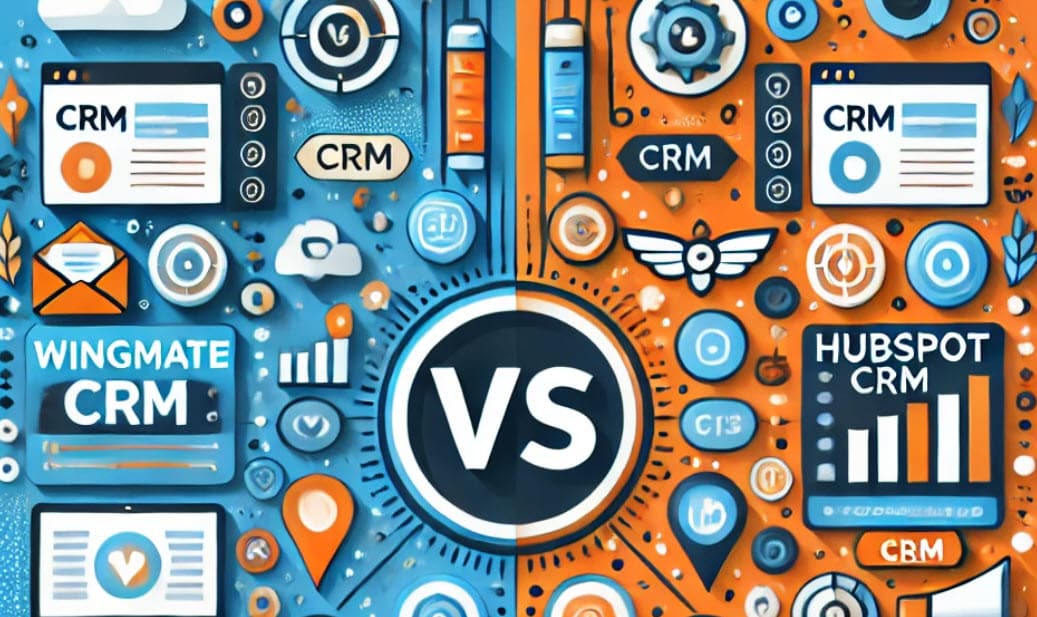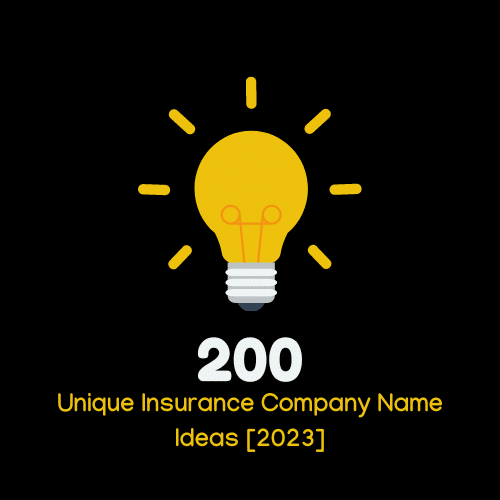
The ‘AI-Agent’ Partnership: 5 Ways AI Will Generate More Leads for You in 2026, Not Replace You
“Artificial Intelligence is coming for your job.”
You’ve heard it. You’ve read it. You’ve probably seen some slick, soulless demo that made you just a little uneasy about your future as an insurance agent. The narrative is that a hyper-efficient algorithm will soon be underwriting, advising, and selling better, faster, and cheaper than any human ever could.
Let’s cut through the noise with a dose of reality. That narrative is wrong.
AI isn’t your replacement. It’s your new, indispensable partner—a force multiplier that will separate the top-producing agents from the ones who get left behind. The future isn’t AI versus the Agent. The future is the AI-Agent Partnership.
For agents who want to build a “badass” book of business, AI isn’t a threat; it’s the single greatest accelerator you will ever have. It’s your 24/7 prospector, your data-crunching analyst, and your hyper-efficient assistant, all rolled into one. It handles the drudgery so you can focus on the one thing you’re uniquely qualified to do: build human trust and close deals.
In this article, we’re breaking down the five concrete, revenue-generating ways AI will empower you to get more leads, better leads, and convert them more effectively in 2026 and beyond.
The Shifting Landscape: Why Agents Need an AI Partner
Let’s be honest: the old-school prospecting model is inefficient and exhausting. Rising ad costs, skeptical consumers drowning in digital noise, and the sheer volume of data make traditional methods feel like panning for gold with a teaspoon. It’s getting harder to find the right prospects, at the right time, with the right message.
This is precisely where AI thrives.
AI is built to see patterns in chaos. It can analyze millions of data points in a fraction of a second—market trends, demographic shifts, online behaviors, life-event triggers—to find signals you could never spot on your own. In fact, the shift is already happening: in a recent McKinsey survey of insurance leaders, more than half stated that generative AI could lead to productivity gains of 10 to 20 percent, transforming how agents find and nurture leads.
But AI has a critical, permanent weakness: it has no empathy.
It can’t understand the complex fear of a new parent buying life insurance. It can’t navigate the anxiety of a business owner protecting their life’s work. It can’t build the genuine, long-term rapport that turns a one-time client into a lifelong source of referrals.
That’s your job.
Think of AI as your advanced scout. It’s the intel officer that tells you where the high-value targets are, who they are, and why they’re likely to buy. You are the elite operator who takes that intelligence and executes the mission.
5 Ways AI Will Generate More Leads for You in 2026
This isn’t science fiction. This is what’s happening right now and what will define the next five years of your business.
1. Predictive Analytics: Unearthing the “Ready-to-Buy” Before They Even Search
The Concept: Predictive analytics is AI’s ability to forecast future behavior based on past data. Instead of waiting for a prospect to fill out a form, this AI tells you who is about to need you, often before they realize it themselves.
How It Works:
AI models ingest and analyze massive, diverse datasets. This includes:
- Life Event Triggers: AI can scan public records, social media cues, and real estate listings to identify people who just bought a home, had a baby, got married, or started a new business.
- Behavioral Data: It tracks how people interact online—which articles they read, what terms they search for—to build a “propensity score” or a measure of their buying intent.
- Next, it sifts through your existing database to find “lookalike” prospects who share the same characteristics as your best clients, instantly expanding your target list.
The Agent’s New Role:
Your prospecting transforms. You stop making cold calls and start making informed, warm calls.
- Old way: “Hi, do you have a minute to talk about life insurance?” (Click).
- New way: “Hi, I see you just registered a new LLC for your consulting business here in Florida. Congratulations. I’m calling because many new business owners haven’t considered a tailored liability policy for their specific industry. Can I send you a one-page guide?”
Insurers leveraging predictive analytics are already seeing a 15-20% lift in conversion rates because they’re engaging the right person, with the right message, at the exact moment of need.
2. Hyper-Personalized Outreach at Scale: Beyond “Dear [FNAME]”
The Concept: Generic, one-size-fits-all email blasts are dead. Hyper-personalization is the new standard, and AI is what makes it possible to do at scale. This is about making every single prospect feel like you’re speaking directly to them.
How It Works:
Generative AI (the same tech behind tools like ChatGPT) can now draft hundreds of unique, personalized email or social media messages in seconds.
- It combines insights from predictive analytics (their life event) with data from their online profile (their industry, job title) and your CRM (their past interactions).
- It can adjust the tone, reference specific local events, or highlight a policy benefit that’s uniquely relevant to their situation.
The Agent’s New Role:
You are no longer a copywriter; you are an Editor-in-Chief.
- AI presents you with 50 draft emails for 50 different high-value prospects.
- Your job is to review, approve, and add your final human flair.
- You’re not spending three hours writing; you’re spending 15 minutes approving and sending.
Imagine your system automatically flagging that a past client’s kid is turning 16 (the “new driver” trigger). The AI then drafts an email for you: “Hi [Client Name], hard to believe [Kid’s Name] is already 16! I know this is an exciting (and a little stressful) time. I ran a few numbers on adding them to your auto policy and found a discount you might be eligible for. Have 10 minutes to chat next week?”
That’s the power of this partnership.
3. Intelligent Lead Scoring & Prioritization: Working Your Hottest Leads First
The Concept: Not all leads are created equal. An
“intelligent lead scoring” system uses AI to dynamically rank every prospect in your pipeline by their likelihood to convert, ensuring you always spend your time on the opportunities most likely to close.
How It Works:
Old lead scoring was simple: “Opened email = 5 points.” AI is infinitely smarter. It looks at dozens of signals, including:
- Behavioral: Did they visit your pricing page? How long did they stay? Did they download your “Commercial Auto Guide”?
- Demographic/Firmographic: Does their company size, industry, or job title match your ideal client profile?
- Engagement: How quickly did they open your email? Did they click a link? Did they stop opening your emails?
The AI assigns a dynamic score (e.g., 1-100) that updates in real-time. This turns your CRM from a data graveyard into a living, breathing “revenue-generating-plan.”
The Agent’s New Role:
You start your day, open your CRM, and see a prioritized list.
- “Hot” Leads (90+): Call these now. The AI has high confidence they are ready to talk.
- “Warm” Leads (70-89): Put these in a specific, high-touch email nurture sequence.
- “Cold” Leads (<70): Add these to a long-term, low-touch newsletter to stay top-of-mind.
You are no longer guessing who to call. You are surgically precise, dedicating your most valuable asset—your time—where it will have the highest impact.
4. AI-Powered Chatbots & Virtual Assistants: Your 24/7/365 Qualifier
The Concept: Your best leads don’t always visit your website between 9 and 5. AI-powered chatbots and virtual assistants engage, qualify, and even book appointments with prospects 24/7, so you never miss an opportunity.
How It Works:
This isn’t the clunky, “Sorry, I don’t understand” bot of 2018. Modern AI chatbots are conversational and intelligent.
- They Engage: “Hi! I see you’re on our Commercial Auto page. Are you an owner-operator or looking to insure a small fleet?”
- They Qualify: The bot asks 3-5 key questions (“How many vehicles?” “What’s your primary business?”) that you would ask on an intake call.
- They Act: Based on the answers, the bot can provide a relevant resource, answer an FAQ, or—most powerfully—integrate directly with your calendar: “It looks like you’re a great fit. Our specialist, Dustin, has openings tomorrow. Does 10:00 AM work for you?”
The Agent’s New Role:
You wake up to find two new, qualified appointments on your calendar. You receive a full transcript of the bot’s conversation, so you start the call already knowing the prospect’s basic needs. The AI has done the first 10 minutes of your job for you, letting you jump straight to high-value advising. A well-implemented AI chatbot can boost website lead capture rates by 30-40% by simply being present and helpful, instantly.
5. Data-Driven Feedback Loops: AI as Your Personal Sales Coach
The Concept: AI’s final, and perhaps most powerful, role is as your personal analyst. It constantly monitors your sales process, analyzes what’s working (and what’s not), and provides a data-driven feedback loop to make you a smarter, more effective agent.
How It Works:
AI can analyze your entire sales funnel. It answers questions you never had time to ask:
- “Which of my email subject lines gets the most opens?”
- “What’s my average close rate for leads from Badass Insurance Leads versus my other sources?”
- “At what point in my follow-up sequence do most prospects drop off?”
- “Are there ‘hidden’ cross-sell opportunities in my existing book of business?”
The AI isn’t just a tool; it’s a coach. It moves you from “gut feeling” to “data-driven strategy,” providing an after-action report on every interaction to help you continuously refine your approach.
The Agent’s New Role:
You are now a strategist, not just a salesperson. You spend 30 minutes on Friday reviewing your AI’s “Weekly Performance Report.” You see that your close rate on leads you call within 5 minutes is 300% higher than those you call after an hour. Armed with this undeniable data, you re-prioritize your entire workflow for the following week.
The AI-Agent Partnership in Action: A Workflow for 2026
Here’s a simple visual of how this partnership flows, transforming your process from reactive to proactive.
| Stage | AI’s Role (The “Intel”) | Agent’s Role (The “Action”) |
| 1. IDENTIFY | Predictive Analytics scans the market, identifying high-propensity prospects (e.g., “new business registrations”). | Review & Approve the target list. You are the human check on the AI’s strategy. |
| 2. ENGAGE | AI Chatbot engages a visitor on your site. Gen-AI drafts a personalized outreach email. | Monitor & Engage with high-intent chatters. Approve & Send the AI-drafted email. |
| 3. QUALIFY | Intelligent Lead Scoring analyzes the prospect’s behavior and scores them (e.g., “92/100 – HOT”). | Prioritize your day. You call this “Hot” lead first, armed with the AI’s context. |
| 4. CONNECT | AI Virtual Assistant schedules the meeting, sends reminders, and logs all data to the CRM. | Build Trust. You focus 100% on the human relationship, needs analysis, and closing. |
| 5. OPTIMIZE | Data Feedback Loop analyzes the call outcome and entire sequence to find insights for next time. | Review & Strategize. You use the AI’s insights to refine your scripts and sales tactics. |
Beyond the Hype: Practical First Steps
This all sounds great, but how do you start without an engineering degree?
- Start with Your CRM: Your Customer Relationship Management software is the brain. Many (like HubSpot, Salesforce, etc.) already have powerful AI features for lead scoring and email automation. Turn them on. Learn them. Use them.
- Identify Your #1 Bottleneck: Where do you waste the most time? Is it writing follow-up emails? Is it qualifying junk leads? Find that one pain point and research an AI tool built specifically to solve it.
- Invest in Quality Leads: AI is powerful, but it’s not a magician. It works best when it’s fed high-quality, high-intent leads. Partnering with a premium lead source (like Badass Insurance Leads) gives your AI partner better “fuel” to work with, dramatically improving its results.
- Embrace Continuous Learning: This technology is evolving fast. Dedicate one hour a week to learning about a new AI tool or strategy. The agents who stay curious will be the ones who dominate the next decade.
Conclusion: Your Future as a ‘Badass’ AI-Powered Agent
AI is not coming to take your job. It’s coming to take your busywork.
It’s here to automate the prospecting, the data entry, the repetitive follow-ups, and the endless guesswork. It liberates you from the 80% of your day that isn’t revenue-generating so you can dedicate your full, human brilliance to the 20% that is: building relationships, understanding complex needs, and providing empathetic, expert advice.
The future of insurance doesn’t belong to AI. It belongs to agents who are smart enough to leverage it.
At Badass Insurance Leads, we’re obsessed with this future. We believe in combining the very best, high-intent leads with the smartest, most empowered agents. AI is the key that unlocks that potential.
So, stop fearing the technology and start embracing your new partner. Now, go build your empire.
Frequently Asked Questions (FAQs)
1. Will AI make my personal touch redundant?
Absolutely not. AI makes your personal touch more valuable, not less. By handling the automated, data-heavy tasks (like prospecting and initial qualification), AI frees up your time to focus only on high-impact human connections. AI can’t build trust, show empathy, or navigate a complex family’s financial fears—that’s where you become indispensable.
2. Is implementing AI too expensive or complex for an independent agent?
Not anymore. You don’t need to build your own system. Many of the most powerful AI tools are now affordably integrated into the CRMs, email marketing platforms, and even lead-gen services you already use. You can start small—with a simple AI email writer or a lead-scoring feature in your CRM—and scale your “AI stack” as you grow.
3. How do I ensure data privacy and ethical use of AI in lead generation?
This is critical. Always prioritize AI solutions and partners that are compliant with all industry regulations (like GDPR, CCPA, and state-level insurance rules). Be transparent in your data practices, use encrypted platforms, and ensure your lead partners are reputable. Trust is your primary asset; any AI tool you use must support that, not compromise it.
4. What’s the very first step an agent should take to adopt AI?
The simplest, most effective first step is to conduct a personal audit. For one week, write down every task you do. At the end of the week, circle every task that is repetitive, data-driven, and low-value (e.g., “data entry,” “writing the same follow-up email,” “sorting a lead list”). That is your AI starting line. Research one tool that can automate your single biggest bottleneck, and start there.
About Badass Insurance Leads
We provide high-intent, aged insurance leads for insurance agents who are serious about growing their book of business. We believe in results, not excuses.






